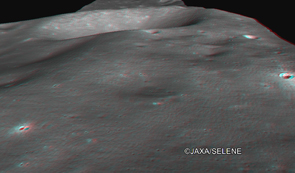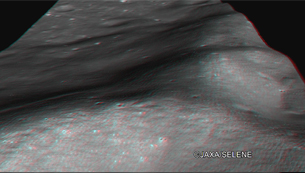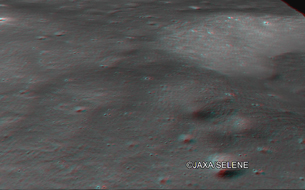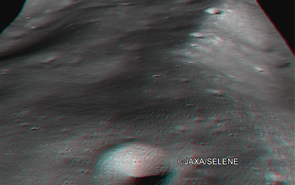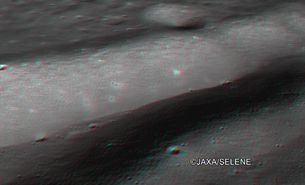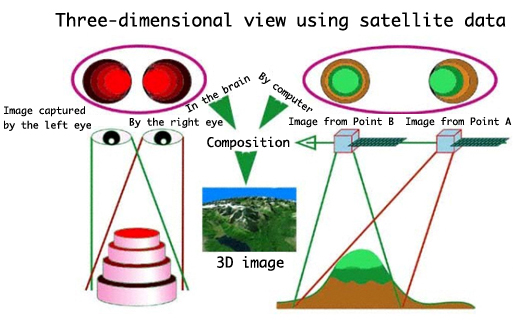KAGUYA (SELENE)
Composition of 3-D Movies with Terrain Camera Images
November 28, 2007 (JST)
Japan Aerospace Exploration Agency (JAXA)
The Japan Aerospace Exploration Agency (JAXA) successfully demonstrated production of stereo movies (3 dimensional movies) of the Moon surface by using stereoscopic images obtained with the Terrain Camera (TC) onboard KAGUYA on Nov. 3, 2007 (Japan Standard Time, JST). This verification was performed as part of the initial check out of mission instruments onboard "KAGUYA" (SELENE), which was injected into the Moon's orbit at an altitude of about 100 km. These are the first 3-D movies of the Moon including its polar areas with an aerial resolution of 10 meters.
Anaglyph images*1 and movies were also produced.
*1: Anaglyph images are 3-D images viewed with red and blue 3-D glasses
Terrain Camera (TC)
The Terrain Camera (TC) can observe the Moon surface during the day-time of the Moon using two cameras that respectively face the slightly diagonal fore looking and aft looking of the satellite. It can take three-dimensional (stereo) images of the Moon's globe with a world's first super high definition of 10 m.Three-dimensional terrain images acquired by TC high resolution stereo pair cameras are important data to study the evolution process of the Moon's unique terrain. With detailed investigation of the crater distribution, we can estimate more precisely when each area of the Moon has been formed and can study more details of when the Moon was born and how its inside and surface have been changing. Furthermore, data acquired by the TC is expected to be useful for studying topographical characteristics and illumination map to determine the best location for a future Moon base and to consider manned activities on the Moon.
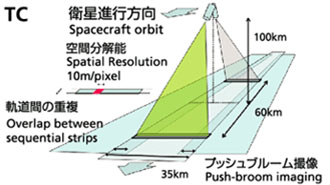
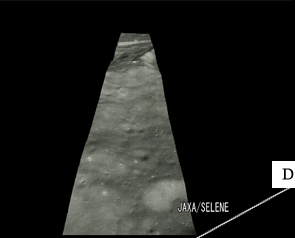 |
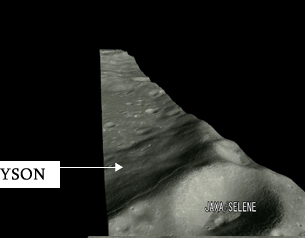 |
 |
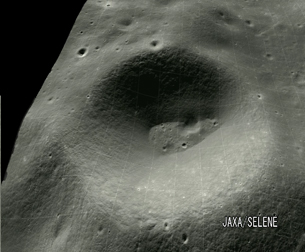 |
 |
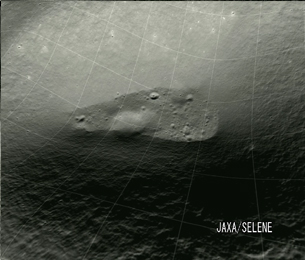 |
Figure 1: Still images captured from the 3-D movie produced from the TC data
The mesh spaced by 1 km.
The mesh spaced by 1 km.
Figure 2: Anaglyph images captured from the movie, composed from the same observation data as those for Figure 1.
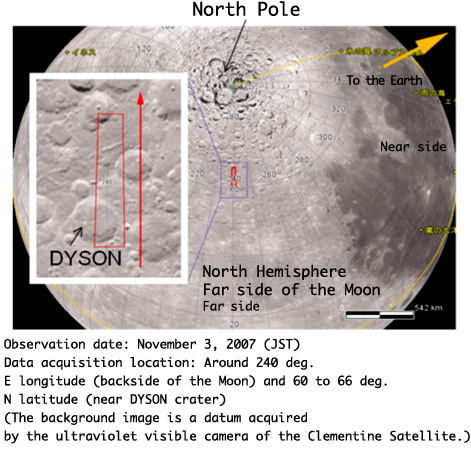 |
Figure 3: Observation locations for Figure 1 and 2
(Reference) Three-dimensional view theory
People use two eyes for looking at an object from left and right, then compose one three-dimensional image of the object in our brain by combining its left angle and right angle views. The KAGUYA Terrain Camera has two eyes (diagonal front view and back view respectively) of a stereo pair to compose 3D images.
|
|
